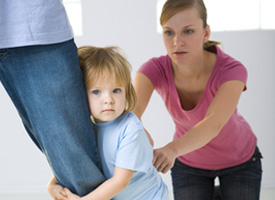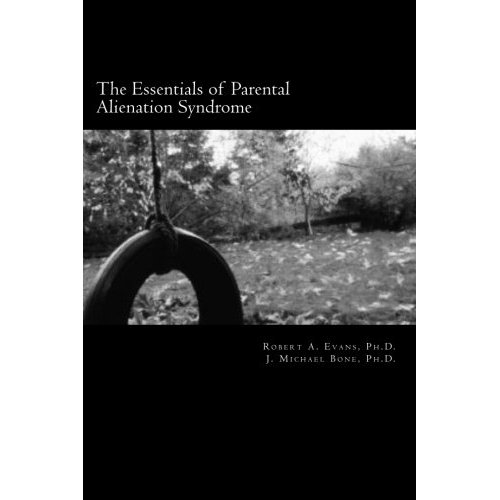Parenting and attachment play a major role in Parental Alienation.
Parental Alienation (PA), as a mental illness concept continues to spark highly charged controversy within both the mental and legal communities. Lines are drawn and highly polarized positions are taken under the banner of concern or welfare for the children of divorce.
A few years before Richard Gardner, M.D. (1987), released the concept of Parental Alienation Syndrome (PAS), Wallerstein and Kelly (1980) discussed pathological alignment, then provided a “reformulation” of PAS (Kelly & Johnston, 2001) with the emphasis on the “alienated child.” What is interesting, however, is that notion of a child rejecting a parent actually goes as far back 1949 with Wilhelm Reich and was referred to as “child stealing” in a California case that made news by a court awarding custody of a child to a father, in 1949 (Lynch v. Lynch aka Teitlbaum, 1949).
But the concepts found under the title “Parental Alienation” have an indepth foundation within the mental health literature. Salvador Minuchin, considered as one of the founders of family systems theory, in 1974 identified “cross-generational coalition” “as an inappropriate alliance between a parent and child, who side together against a third member of the family” forming a triangle. Jay Haley (1977) referred to this as a “perverse triangle.” To a family systems therapist, Parent Alienation is a manifestation of a cross-generational coalition.
In order for there to be alienation between a parent and child, there had to be a loving, caring, bonded (attached) relationship prior to the rejection.
Children derive many benefits from their attached relationships, including emotional comfort, a sense of security, self-confidence/esteem, etc. John Bowlby (1969, 1973) referred to a child’s caregiver as a “secure base” or emotional anchor from which the child derives emotional comfort. The child uses the attached caregiver as a source of nurturance for adaptive cognitive, social and emotional development. This is observed when a child readily leaves the attached parent but then returns to be comforted and reassured of their love and caring.
Research has suggested that the quality of the attachment as young twelve months old reliably predicts later cognitive skills, confidence, leadership skills, peer relationships, anxiety, psychopathology, and family dynamics (Bretheringon,1985; Laible, Gustavo, & Raffaelli,2000; Deason & Randolph, 1998; Barnett, Butler, & Vondra, 1999; Schneider, Atkinson, & Tardif, 2001;Thompson, 2000; Belsky & Cassidy, 1994; Cook, 2000).
Bowlby also claimed that children create an “internal working model” of each attachment figure, that is, a dynamic mental representation of that person. The child’s “model” of the attached figure changes as they acquire new information and experiences. As the child develops higher cognitive capacities, the information that influences the child’s “model” increasingly becomes language-based rather than the attached parent’s behavior.
A child’s perception of new information (“message”) about a specific attachment figure will be perceived either as consistent or inconsistent with the existing “model” of that caregiver.
 A message that is consistent with a child’s existing “model” of a specific caregiver presumably reinforces the child’s experience of relative security in that relationship. To the extent that such a message is perceived as discrepant or inconsistent, it will either be ignored or the child may be accommodated in order to more “accurately” reflect the new information. Thus, in order to alienate a child from a parent, there is a need and an intention to isolate the child from the soon to be rejected parent in order to instill “new” or what turns out to be false information into the child’s model of that parent.
A message that is consistent with a child’s existing “model” of a specific caregiver presumably reinforces the child’s experience of relative security in that relationship. To the extent that such a message is perceived as discrepant or inconsistent, it will either be ignored or the child may be accommodated in order to more “accurately” reflect the new information. Thus, in order to alienate a child from a parent, there is a need and an intention to isolate the child from the soon to be rejected parent in order to instill “new” or what turns out to be false information into the child’s model of that parent.
For a more in depth understanding we invite you to join us for a new continuing education workshop on “Litigating Family Law Cases with Parent Alienation and Reviewing Related Evaluations” on August 22, 2014 at Lakewood Ranch, near Sarasota, FL.
References
Barnett, D., Butler, C., & Vondra, J.(1999). Atypical patterns of early attachment: Discussion and future directions. Monograph of the Society for Research in Child Development, 64(3), 172-191.
Belsky, J.,& Cassidy,J.(1994). Attachment: Theory and evidence. In M. Rutter & D. Hay (Eds.), Development through life: A handbook for clinicians (pp. 373-402). Oxford: Blackwell Scientific.
Bowlby,J.(1969). Attachment and loss: Volume 1. Attachment. NewYork: BasicBooks.
Bowlby,J.(1973). Attachment and loss: Volume 2. Separation. NewYork: BasicBooks
Bretherington, I. (1985). Attachment theory: Retrospect and prospect. Monographs of the Society for Research in Child Development, 50 (1-2, Serial No. 209), 3-35.
Cook, W. (2000). Understanding attachment security in family context. Journal of Personality and Social Psychology, 78(2), 285-294.
Deason, D.,& Randolph, D.(1998). A systematic look at the self: The relationship between family organization, interpersonal attachment and identity. Journal of Social Behavior and Personality, 13(3), 465-479.
Gardner, R. A. (1987). The parental alienation syndrome and the differentiation between fabricated and genuine child sex abuse. Cresskill, NJ: Creative Therapeutics.
Kelly, J.,& Johnston, J.(2001). The alienated child: A reformulation of parental alienation syndrome. Family Court Review, 39(3), 249-267.
Laible, D.,Gustavo, C.,& Raffaelli, M.(2000). The differential relations of parent and peer attachment to adolescent adjustment. Journal of Youth and Adolescence, 29(1), 45-59.
Wallerstein, J. S. & Kelly, J. B. Surviving the breakup. New York: Basic Books, Inc., 1980.
Haley, J. (1977). Toward a theory of pathological systems. In P. Watzlawick & J. Watzlawick (Eds.), The interactional view (pp. 31-48). New York: Norton.
Minuchin, S. (1974). Families and Family Therapy. Harvard University Press.
Reich, W. (1949). Character analysis. New York: Farrar, Straus and Giroux
Schneider, B., Atkinson, L., & Tardif, C.(2001). Child-parent attachment and children’s peer relations: A quantitative review. Developmental Psychology, 37(1), 86-100.
Thompson, R. (2000). The legacy of early attachments. Child Development.



Are you familiar with Dr Childress’ attachment based model of parental alienation? It is based on well established, widely accepted psychological constructs:
https://sites.google.com/site/centralohiopa/attachment-model-of-parental-alienation
Yes I am familiar with Dr. Childress’ work. A problem is that some of his work is not based on well established, widely accepted psychological constructs.
Pathogenic parenting is not to be found anywhere, unless you know of a reference. It was stated somewhat like that in the DSM-IV but is not in the DSM-5.
I’ve tried to find references to it but I can’t find it. My opinion is that introducing new terminiology in to an already contested arena can be more problematic
than staying the course with what we have. The Courts are alreay confused about what we’re talking about and be assured attorneys representing alienating parents
will jump all over something new that will have to meet evidentiary standards. While in clinical settings one can consider and use new concepts, and yes I know
some of these are not new, in the legal arena introduction to new (new to them) can be a problem. We are trying to help children in the legal system not prove
some clinical terminology and if we can do that with what we already have then why not?
My understanding is that when he refers to standard and well established pathologies, these are the ones to which he refers: http://drcachildress.org/asp/admin/getFile.asp?RID=106&TID=6&FN=pdf
Thanks for explaining some things how to fight parental alienation. I’m glad you explained you should learn if they participate in the Parental Alienation Canada I’m kind of interested to learn more as to what this participation would entail.